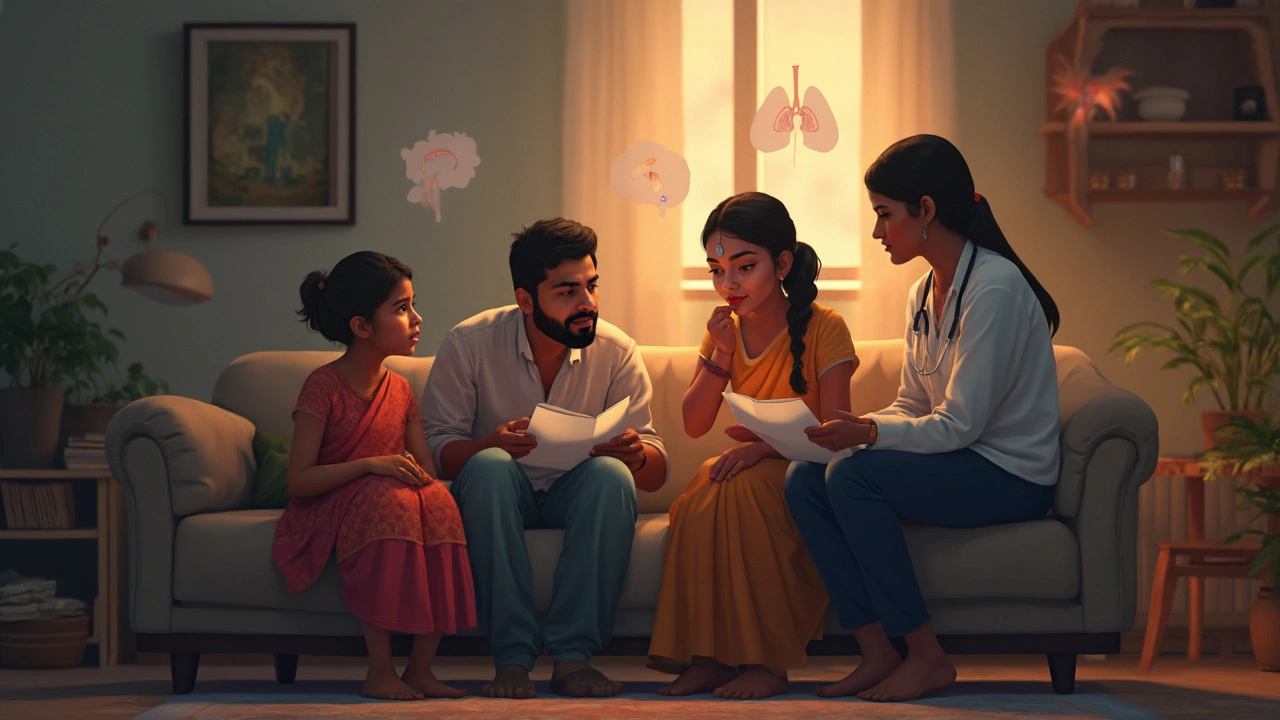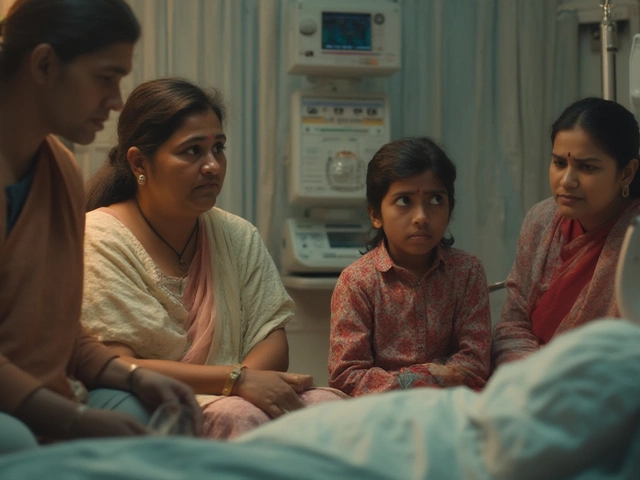When you start looking into cancer survival rates, the numbers can be shocking. Some cancers have decent odds if caught early, but others don’t play fair at all. If you’re worried about which cancers are hardest to beat, you’re not alone—this is a question families, patients, and even doctors wrestle with every day.
Let’s cut to the chase: pancreatic cancer keeps coming up at the top of the list for the lowest survival rate. Its five-year survival hovers in the single digits, even with new drugs and tech. Most people don’t notice symptoms until it’s already spreading. That’s a huge reason behind its grim reputation.
But it’s not just about the stats. Knowing what makes some cancers more stubborn—late diagnosis, how fast they grow, and where they pop up—can help you see why they’re so tough to treat. If you know the risk factors and watch for red flags, you might catch a problem a lot earlier. That’s a big deal since even a few months can make a real difference in survival odds.
- Why Some Cancers Are More Lethal Than Others
- Pancreatic Cancer: The Grim Leader
- Other Cancers with Tough Survival Odds
- What Low Survival Rates Really Mean for Patients
- Spotting Trouble Early—Can It Make a Difference?
- Latest Hopes and Breakthroughs in Treatment
Why Some Cancers Are More Lethal Than Others
Not all cancers play by the same rules. Some types have much lower survival rates because they're experts at hiding, moving fast, or just showing little to no symptoms until it’s way too late. So, let’s break down what actually makes certain cancers deadlier than others by looking at real facts and actual numbers.
The lowest cancer survival rate usually shows up when a cancer:
- Stays silent: No clear symptoms until it’s already advanced.
- Lives in hard-to-notice spots: Think about how small and hidden your pancreas is.
- Spreads early: Some cancers easily hop to other organs before you even know they're there.
- Fights back against treatments: Certain types, like pancreatic or lung cancer, just don’t respond well to usual therapies.
Let’s check out a snapshot that exposes the tough odds:
| Cancer Type | 5-Year Survival Rate (2023, USA) | Main Reason for Low Survival |
|---|---|---|
| Pancreatic | 12% | Late detection, aggressive spread |
| Liver | 21% | No symptoms until advanced |
| Esophageal | 21% | Hidden symptoms, rapid growth |
| Lung | 23% | Often found after spreading |
| Stomach | 33% | Subtle early signs |
As Dr. Karen Knudsen, CEO of the American Cancer Society, put it,
"The cancers most likely to steal years from people are often the ones that don’t show themselves until the damage is already done."
Researchers also point out that lifestyle, genetics, and even regular health checkups can tip the scale, but when a cancer’s tricky or fast, typical warning signs just don’t show up in time. This is a big reason why even the best treatments struggle to keep up with certain cancer types.
Pancreatic Cancer: The Grim Leader
If there’s one cancer that doctors and researchers say is especially tough, it’s pancreatic cancer. For years, this type has held the title for the lowest cancer survival rate. The five-year survival rate in 2025 is still stuck around 11%. That means only about one out of ten people are still around five years after diagnosis. Not great odds.
The biggest problem? Pancreatic cancer is a master of hide-and-seek. Most people don’t feel anything until it’s way too late. The pancreas is buried deep in your belly, so tumors can grow without causing pain or showing up in routine tests. By the time symptoms like jaundice, unexplained weight loss, or belly pain start, the cancer’s often already spread.
Another reason it’s so deadly: this cancer resists a lot of treatments. Surgery is only an option for a small chunk—less than 20%—because most cases are found after it’s too late to remove the tumor. Chemotherapy and radiation do help some, but the results aren’t as strong as with other cancers.
Researchers are always looking for better blood tests or ways to catch pancreatic cancer early, but there’s no simple screening tool yet—unlike mammograms for breast cancer. Here’s what’s known to raise your risk:
- Having a close family member who had pancreatic cancer
- Smoking (yep, still bad news)
- Long-term diabetes
- Chronic pancreatitis (inflammation of the pancreas)
- Obesity
If those sound familiar, don’t panic—they just mean you should pay attention to weird digestive issues or unexplained weight changes and have an honest conversation with your doctor. Even just talking about your family history can help your doc catch something sooner.
Bottom line: pancreatic cancer is aggressive, hard to spot and even tougher to treat. That’s why the survival rates are where they are, despite years of research. But knowing your risks and being aware of symptoms can still tip the odds, even if just a little.
Other Cancers with Tough Survival Odds
So, is pancreatic cancer the only cancer with scary low survival rates? Sadly, it’s not. A handful of other cancers are also notoriously tough to survive, especially if they get caught late. When you’re looking at which ones pack the biggest punch, it helps to see real stats and not just scary stories online.
Here are some of the big names when it comes to lower survival rates, besides pancreatic cancer:
- Lung cancer still takes a massive toll globally. Its five-year survival rate is around 20% in recent studies, but for those diagnosed late, it’s way lower.
- Esophageal cancer often goes unnoticed until it’s spread. Five-year survival barely breaks 20% for most patients.
- Liver cancer is another giant. The numbers hover around 20% for five years, but much lower if it’s found at advanced stages.
- Stomach (gastric) cancer isn’t super common, but its survival stats are rough, with a five-year survival of about 30%—and even less late-game.
- Brain cancers, especially glioblastoma, are infamous for quick progression and poor outcomes. Glioblastoma’s five-year survival rate? Around 7%.
For a clearer picture, check out this table with the most recent survival rates based on global health data from 2024:
| Cancer Type | Five-Year Survival Rate (%) |
|---|---|
| Pancreatic | 12 |
| Lung | 20 |
| Esophageal | 19 |
| Liver | 21 |
| Stomach | 30 |
| Brain (Glioblastoma) | 7 |
Why are these so tough? It usually comes down to where these cancers start, how hard they are to spot early, and how fast they spread. So even with the best treatment at top hospitals, most people don’t get to treatment soon enough for a fighting chance. That’s why the lowest cancer survival rate is such a big conversation point in the field.
If you or someone you care about is at risk for any of these, regular screening, knowing your family history, and spotting symptoms early can make a difference—even if it’s not always a guarantee. Information is power when it comes to these tough odds.

What Low Survival Rates Really Mean for Patients
Seeing a low survival rate for your type of cancer feels like a punch to the gut. Take pancreatic cancer, for example—the five-year survival rate is around 12%. For those who get a late-stage diagnosis, that number drops even more. So, what does this really mean for patients and their loved ones?
First off, survival rate doesn’t predict what will happen to a specific person, but it does set the expectations for the fight ahead. It reflects how well the average patient does under current treatments. These numbers come from big cancer registries that track thousands of patients over years. So they’re reliable, but they don’t account for the latest treatments or a person’s health, age, or attitude.
When someone hears they have a cancer with a low survival rate, daily life changes immediately. People often feel stuck between hope and reality. Few things are as tough as trying to keep your spirits up while planning for tough treatments, maybe even clinical trials or experimental options. My friend Ravi once described it as living in the fast lane with no brakes—every moment suddenly matters more than ever before.
Low survival rates also affect family and support networks. Folks often have tough conversations way sooner than anyone wants. Many start thinking about advance care planning, finances, or making time for what really matters. Emotional support gets just as important as medicine.
- Do your homework on every available treatment, even those in trial phases.
- Don’t be afraid to ask your doctor hard questions about survival odds and what quality of life looks like in the months ahead.
- Lean into support, whether from family, friends, or professional counselors.
- Consider joining a patient group—nobody understands the fight better than someone on the same road.
If you or someone you love is facing a lowest cancer survival rate diagnosis, remember this: Statistics are just numbers. Some people beat the odds every single year. Keep asking questions, push for second opinions, and make choices that are right for your own journey.
Spotting Trouble Early—Can It Make a Difference?
Here’s the deal: catching cancer early is probably the most realistic way we have to tip the odds in our favor, especially with those types that have the lowest survival rates. Think about pancreatic cancer—it rarely gives any warning until it’s pretty far along. By then, most treatment choices just slow things down instead of knocking it out. But when doctors do catch it early? Survival stats double or even triple, even if they aren’t great by normal standards.
The truth is, early detection matters for nearly every cancer, but it’s a game-changer for the tough ones. The sooner you spot cancer, the smaller it is, and the less likely it’s spread. That almost always means less crazy treatments and better chances to survive.
"For cancers like pancreatic or lung, symptoms often show up late, but if we catch them in the first stage, five-year survival rates can jump from less than 10% to nearly 40%." – Dr. Smitha Nair, Oncologist at Apollo Hospitals (2024)
Wondering how to boost your shot at early detection? Here’s what helps:
- Know your risk—If your parents or siblings had certain cancers, tell your doctor. Genetics really matter for some types.
- Don’t ignore weird symptoms—Unexplained weight loss, belly pain, or constant tiredness should be checked out.
- Screenings—Tests like low-dose CT for heavy smokers (lung cancer) and specific blood markers can help people at risk.
- Healthy lifestyle—Eating right, staying active, and quitting smoking won’t guarantee safety, but it definitely swings the stats your way.
Let’s look at the numbers for a few cancers where finding trouble early changes the equation:
| Type of Cancer | Stage at Diagnosis | 5-Year Survival Rate (%) |
|---|---|---|
| Pancreatic | Early (Stage I) | 39 |
| Pancreatic | Late (Stage IV) | 3 |
| Lung | Early (Stage I) | 63 |
| Lung | Late (Stage IV) | 7 |
| Ovarian | Early (Stage I) | 93 |
| Ovarian | Late (Stage IV) | 31 |
You can see how important timing is—some numbers jump by more than 10 times if cancer gets found before it spreads. The catch is, low survival cancers like pancreatic don’t have great screening tools yet. That’s why knowing your risks and talking honestly with your doctor is so important. Staying alert and pushing for answers when something feels off is the single best play against lowest cancer survival rate threats.
Latest Hopes and Breakthroughs in Treatment
There’s actually some good news here if you’ve been following the headlines on cancer treatment. In just the past couple of years, researchers have moved past just talking about new ideas and actually started rolling out new approaches—especially for tough cancers like pancreatic.
For starters, immunotherapy, which basically teaches your immune system to attack cancer, is slowly getting better results. While old-school chemo still gets used, some patients are now getting personalized medicine. That means doctors study the exact makeup of your tumor (often with genetic testing) and pick treatments that fit you, not just the type of cancer.
Pancreatic cancer, which has the lowest cancer survival rate, finally saw a couple of approved drugs—like PARP inhibitors—for folks who have specific genetic mutations. Hotels in big cities are starting to offer clinical trial stays because so many people want cutting-edge treatment they can’t get at home.
- Liquid biopsy is a blood test that finds cancer by hunting for little bits of tumor DNA. It can spot cancer earlier or watch how well a treatment is working, so you’re not stuck waiting months for an answer.
- Artificial intelligence is now helping radiologists read scans faster and more accurately. It can flag stuff that a tired human might miss.
- Robotic surgery lets doctors do super-precise operations with fewer side effects and less pain, cutting down recovery time.
If you or someone you love wants to get into a clinical trial, don’t assume it’s only for those out of options. Trials now cover almost every stage of cancer and often open up chances to try something new. Always ask your doctor about recent trials or check reliable online registries—the top hospitals publish lists anyone can search.
This stuff doesn’t flip survival rates overnight, but hope is real. A decade ago, none of these tools even existed. Now they’re regular parts of the conversation with patients. Even if the survival stats still look rough, every year brings sharper tools and better odds for many cancers, even the really stubborn ones.





